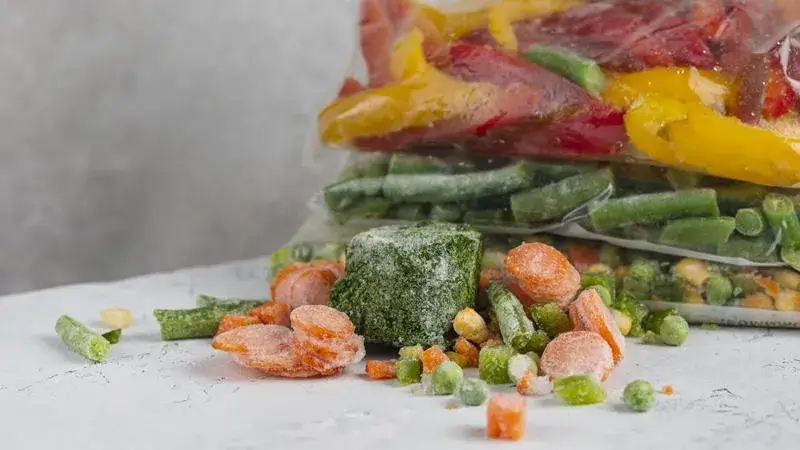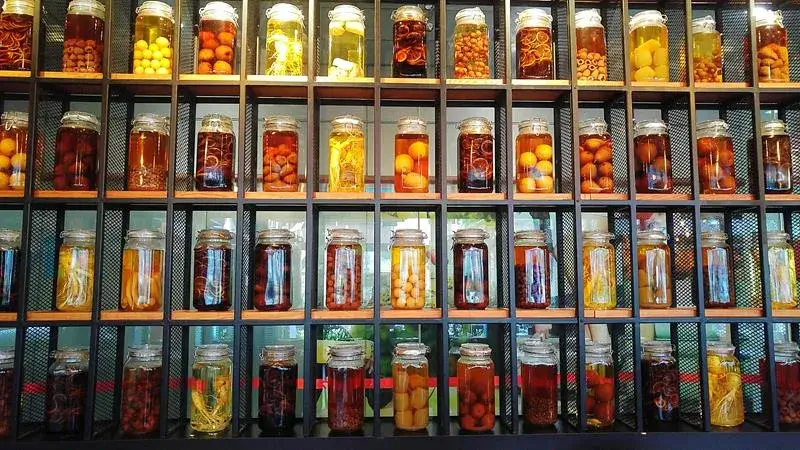Summer harvest is a treasure, and preserving fruits and vegetables naturally means enjoying fresh taste and nutrients all year. Whether you grow your own or buy from local markets, knowing how to preserve vegetables and fruits sustainably helps reduce waste and brings sunshine to your winter meals.
Why preserve your harvest?
Store in a dark, cool place (root cellar)
A cool, dark storage spot—like a root cellar or pantry—has long been a natural way to keep hardy vegetables fresh without using energy. Potatoes, carrots, beets, and squash do especially well in these conditions. When stored at 0–4°C (32–39°F) with the right humidity (85–95%), they can stay crisp and edible for 3 to 6 months, all while holding on to their earthy, just-harvested flavor.
Pros: Energy-saving, low effort.
Cons: Limited to firm produce only. Needs the right conditions.

Freeze after blanching
Leafy greens, beans, corn, and peppers keep their best qualities when frozen—but with a quick prep step first. A brief blanch in boiling water (just 1–3 minutes) locks in their color, texture, and nutrients while halting natural enzymes that cause spoilage. When properly frozen, these vegetables retain their crispness, vibrance, and freshness for up to 12 months. They taste as if they’ve just been harvested from the garden.
Pros: Provides great taste and nutrition.
Cons: Requires preparation time, as well as freezer space.
Drying and dehydrating
Drying is a simple way to preserve herbs, peppers, tomatoes, and apple chips for a much longer period. By removing moisture, it keeps bacteria at bay and preserves the harvest. You can use a dehydrator, a low-temperature oven, or, in sunny, dry weather, let nature do the work outdoors. The process gives foods a bold, concentrated flavor with either a chewy or crisp bite, and when stored in airtight containers, they’ll keep well for 6–12 months.
Pros: Easy to store data and compact in size.
Cons: Requires precise timing and control of airflow.
Pickling and fermentation
Lactic acid fermentation is one of the oldest methods of preserving food. This method is particularly great for pickling cucumbers, cabbage, carrots, and even making kimchi. The natural process not only boosts flavor but also creates probiotic-rich, gut-friendly foods without added preservatives. The flavour goes from pleasantly tart and advances to boldly tangy as it ferments, and when it’s in the refrigerator, it will last from 1–6 months (or more if the jar is properly canned).
Cons: Sensitive to temperature, the acidity level is key.
Jams, sauces, and canning
Ideal for berries, tomatoes, compotes, and salsas, canning is a classic way to lock in seasonal flavors. Using either a water bath or pressure method, you can create everything from bright jams to rich sauces and preserves. The important part is to use sterile jars and a tested recipe that contains the proper amount of acidity to be safe. The result is food with concentrated sweet or savory notes that can be enjoyed for 12–18 months.
Pros: Great for gifting and pantry use.
Cons: Time-consuming, needs accuracy.
Extra harvest hacks & handy tips
- Blanching for freezing. Boil spinach or kale for a short period of time, rapidly cool in ice water, squeeze out and freeze into portions for easy use.
- Root cellar essentials. Store carrots, beets, or other roots in a cool place out of the light (0-4°C / 32-39°F), with air circulation; make sure not to store near apples.
- Freeze berries right. Pre-freeze on trays to keep them from clumping in bags.
- Label everything. Indicate the date and the method used (raw, blanched, cooked).
- Rescue wilted greens. Used to make quick scrambles or stir-fries.
- Cook watery veggies. Preserve zucchini and eggplant in the form of breads, dips, or sauces before putting them in the freezer.
- Preserve peppers. Pickle, jam, or freeze them; hot peppers also work in infusions.
- Quick-dry herbs. Microwave with paper towels until brittle, then store airtight.
- Easy tomatoes. Blanch and freeze whole, or cook into sauce for winter use.
You can use basic techniques to preserve fruits and vegetables, which will help maintain their nutritional value and flavors, without any chemicals. Simple tools and techniques can help capture the nutrition of each season. Blanching, not overfilling jars, not wet storing produce, and following fermentation safety measures are some of the common mistakes to avoid to keep your preserved foods safe and fresh, all while trying out different methods and textures.

Author

Alexandra Mukhina
Content writer on https://rythmoftheworld.com Experienced linguist and translator with a knack for crafting and refining diverse content. My goal is to produce engaging, informative texts that captivate readers. Passionate about reading, music, traveling, and exploring new avenues of personal growth.



